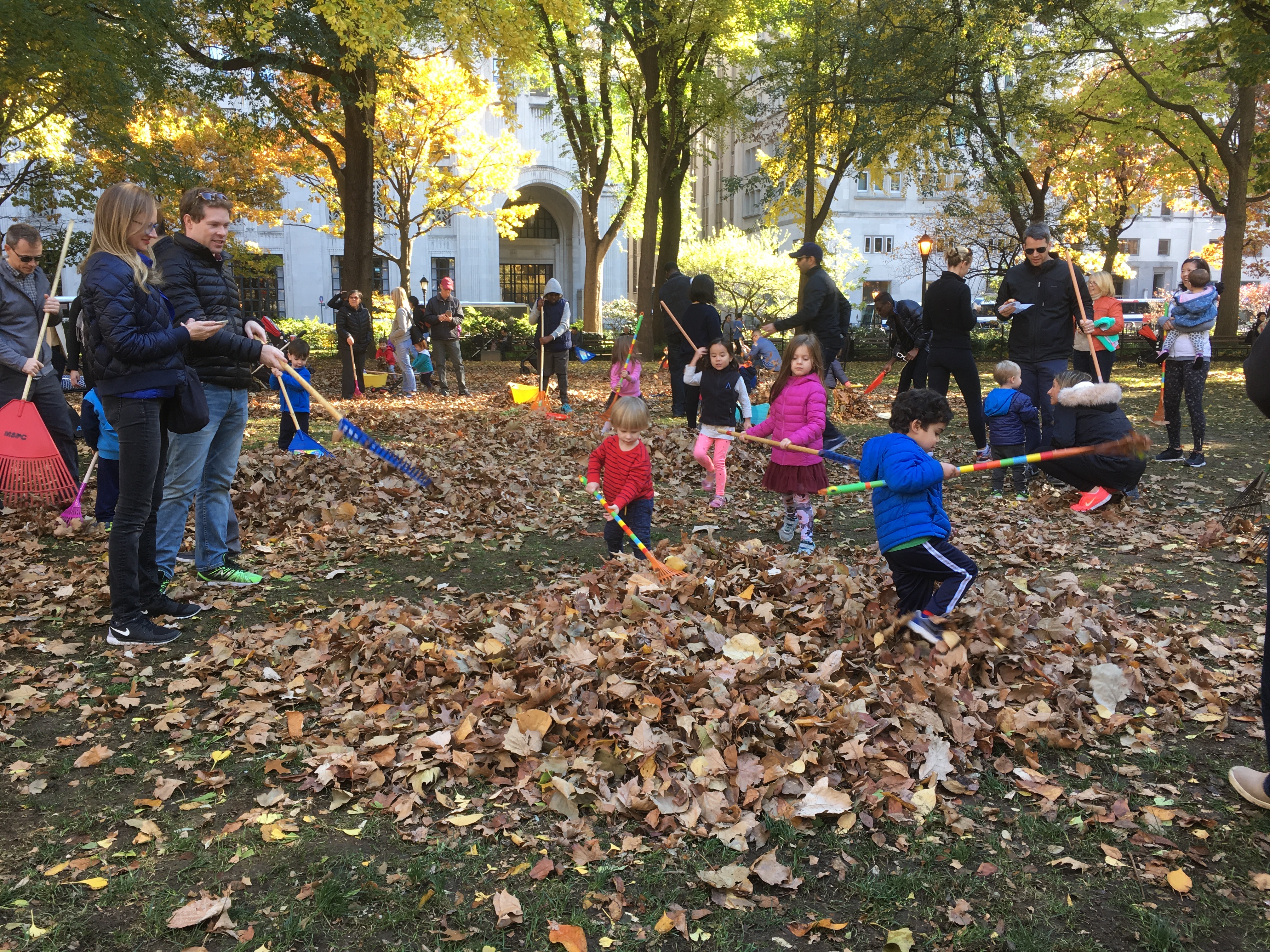This site uses cookies – Learn more.
Sustainably Managing the Park’s Leaves
Sustainably Managing the Park’s Leaves
Fall is a beautiful time in Madison Square Park. The air is crisp and cool and the leaves begin to change color as our tree canopy begins sporting a wonderful mix of reds, yellows, and oranges. But eventually the leaves begin to fall; have you ever wondered what happens to those leaves?
Naturally, many people’s first response is that the leaves should be raked and shipped away to maintain an aesthetically pleasing greenspace. However, sending waste to landfills contributes to climate change due to the carbon emissions generated during transport. Luckily, we can repurpose the leaves in a way that is beneficial to our park.
How Bad Can Fallen Leaves Be? Aren’t They Natural?
Yard waste is the third-largest component of solid waste by weight, and the most prolific source of waste by volume. Each year, 33.4 million tons of yard waste is produced in the United States. Over 65% of this waste, including fallen leaves, is sent to landfills. For years, Madison Square Park’s team would rake and bag leaves and load them into a truck to be driven to a landfill where they would decompose. Now, we have a more eco-friendly solution.
Won’t They Rot Anyway? How Do You Avoid Emissions?
First, we leave as many of the leaves as we can in our garden beds. These leaves will decompose naturally, providing many benefits for our gardens as they do.
For the unsightly leaves on our busy lawns and walkways, we use a leaf vacuum to suck them up and a chipper to shred them. The shredded leaves quickly compost into a dark, black, earthy mixture through an aerobic process that reduces or prevents emissions as the organic matter breaks down. This material is then applied to garden beds, providing them with nutrients.
Benefits of the Leaves
Both fully intact and mulched leaves create an insulating layer for some of the park’s most important wildlife species. Under just a few inches of leaf cover, caterpillars, bumblebees, ground-nesting bees, and fireflies can hibernate throughout the winter, protected from the cold and predators. In fact, fallen leaves from the park’s oak trees alone can support butterfly species and nearly 70 variations of moths!
Also living under the leaf cover are rich ecosystems of fungi, bacteria, insects, earthworms, and beetles. These decomposers work all winter long to further break down the leaf material. This improves soil aeration and water draining in garden beds.
Healthy soil under the mulch and leaves holds onto nutrients that would otherwise be lost when it rains, reduces soil erosion, and suppresses the growth of weeds, helping our gardens thrive as springtime approaches.
Thank you to Amazon and The New York EDITION for their support of our sustainability initiatives.







